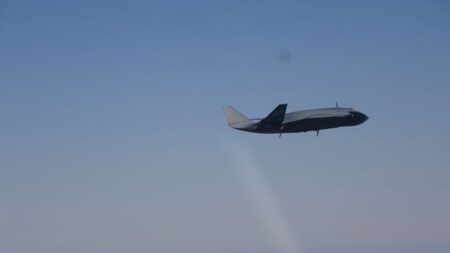A radar-based system tested at the US Army Dugway Proving Ground in Utah will soon allow military operators of unmanned aerial vehicles to fly within the National Airspace System to help maintain their skills.
Ground Based Sense and Avoid (GBSAA) is the first and only system that meets federal requirements that aircraft operators see and avoid other aircraft, said program test lead John Innes: “The GBSAA has been tested at Dugway since 2012. Dugway testing is overseen by the US Army’s project manager – unmanned aircraft systems, of Redstone Arsenal, Alabama.
Until the GBSAA was created, flying unmanned aircraft within the NAS required a chase plane or ground observer. The new system eliminates that requirement by not only accurately displaying other aircraft near the unmanned craft, but notifying its operator of potential hazards. Developers will return to Dugway this autumn to complete the final portion of the last test, and to carry out one full test. Continued testing at Dugway is expected as issues and changes within GBSAA are developed or explored, according to Innes.
The GBSAA system was created solely for the military, to allow operators of unmanned aircraft systems (UAS) to fly safely within the NAS without lookouts.
Data input to the GBSAA traffic display comes from ground-based radar, and onboard aircraft transmitters that broadcast position. To ensure accuracy, data from three separate radars are fused together and continually compared to data from the aircraft. A human ground based operator (GBO) – a former pilot or air traffic controller – monitors the traffic display for system health, warnings and aircraft positions. A separate alert display provides a similar picture, and notifies the GBO of potential aircraft conflicts monitored by the GBSAA system. The GBO, at an on-ground workstation, communicates directly with the aircraft operator.
GBSAA testing has been so successful that the US Army will soon field it at five major stateside installations. The Marines and Air Force are also interested in fielding the system at one of their stateside installations.
May 20, 2016




